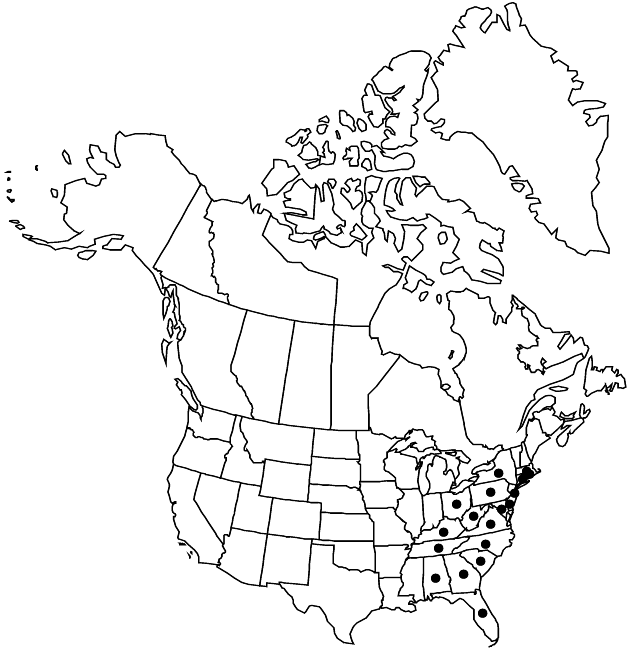Doellingeria infirma
Pittonia 3: 52. 1896.
Plants 40–120 cm (crowns short, woody). Stems 1, ascending to erect, slightly to strongly flexuous, striate, glabrous. Cauline leaves: mid and distal not crowded, blades broadly lanceolate to oblanceolate, 50–130 × 15–45 mm, reduced and narrower distally, bases cuneate, margins flat to ± involute, finely ciliate, apices acuminate, faces glabrous or sparsely hairy. Heads (1–) 3–33 (–78). Peduncles 1–10 mm (leafless or nearly so), sparsely to moderately canescent; bracts linear-lanceolate to broadly lanceolate. Involucres 3.8–6.8 mm. Phyllaries in 4–5 series, midveins usually swollen and translucent, apices narrowly rounded, glabrate. Rays (3–) 4–8 (–11); laminae 6–12 (–14.5) × 1–3.3 mm. Disc-florets 4–13 (–20); corollas 4–7 mm, lobes 2.5–3.5 mm, 50–75% of limbs. Cypselae 1.8–3.8 mm, 6–10-ribbed, glabrous, rarely sparsely strigose, sometimes sparsely glandular; pappi: outer 0.5–1 mm, inner 3.9–5 mm. 2n = 18.
Phenology: Flowering mid summer–early fall.
Habitat: Rich loam and dry rocky soils, deciduous woods, mountains and adjacent plateaus
Elevation: 10–100 m
Distribution

Ala., Conn., Del., Fla., Ga., Ky., Md., Mass., N.J., N.Y., N.C., Ohio, Pa., R.I., S.C., Tenn., Va., W.Va.
Discussion
Doellingeria infirma is found in the Appalachian Mountains, the Piedmont and adjacent plateaus, to northern Florida.
Selected References
None.
Lower Taxa
No values specified."[" is not declared as a valid unit of measurement for this property."]" is not declared as a valid unit of measurement for this property.